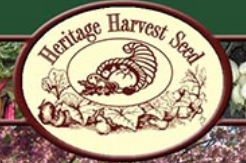Pumpkin
Filter by:
Pumpkin Suppliers
Pumpkin Pests & Diseases
- Texas A&M - Cantaloupe, Cucumber, Squash, Pumpkin and Crenshaw | Texas Plant Disease Handbook
- Penn State - Pumpkin | Diseases and Pests, Description, Uses, Propagation
- University of Illinois - Growing Pumpkins - Pumpkins and More - University of Illinois Extension
- West Virginia University - Growing Pumpkins | Extension Service | West Virginia University
Pumpkin Growing Guides
- University of Illinois - Growing Pumpkins - Pumpkins and More - University of Illinois Extension
- The Ohio State University - When to Plant Pumpkins | Food and Agriculture
- Penn State - Pumpkin | Diseases and Pests, Description, Uses, Propagation
- Garden Savvy - How to Grow Pumpkins
- West Virginia University - Growing Pumpkins | Extension Service | West Virginia University
The round, ribbed pumpkin is native to North America, originally in the northern parts of what is today Mexico, and the southern United States. Pumpkins were cultivated from winter squash by Indigenous peoples thousands of years ago. The term pumpkin is used sometimes for other varieties of winter squash.

The round, ribbed pumpkin is native to North America, originally in the northern parts of what is today Mexico, and the southern United States. Pumpkins were cultivated from winter squash by Indigenous peoples thousands of years ago. The term pumpkin is used sometimes for other varieties of winter squash.
There is a huge variety of pumpkins. The two main categories are vining pumpkins and bush pumpkins. Both kinds include smaller pumpkins and larger jack-o-lantern types. Sugar pumpkins (or “Pie Pumpkins”) are smaller and are the best for making traditional pumpkin pie. Smaller pumpkins are much sweeter and are best for cooking. Jack-o-lanterns are great for decoration but are less flavorful than the smaller sugar pumpkins. Baking with spices, or using as a squash alternative is a good idea with these. The larger giant-sized pumpkins are watery and have much less flavor. All types are good for pumpkin seeds which can be saved and roasted.
Pumpkins are very nutritious. They are an excellent source of Vitamin A and are a great source of vitamins K, E, B6, and C, and of the minerals potassium, iron, magnesium, and copper. They are high in antioxidants and are also a good source of folic acid.
- Pumpkin: Cucurbita pepo
- Annual
- Full sun (6-8 hours minimum)
- Soil should be slightly acidic (6.0-6.8 pH)
- Well-drained, sandy, and fertile soil is best
- Garden planting:
- Bush or semi-bush pumpkins:
create 15-inch diameter hills, spaced 3 feet apart
plant about 4 seeds per hill, 2” deep, thin to two plants on each.
Rows should be 8 feet apart.
- Full-sized vining pumpkins:
create 15-inch diameter hills, spaced 5 feet apart
plant about 4 seeds per hill, 2” deep, thin to two plants on each.
Rows should be 12 feet apart
- Miniature pumpkins:
plant seeds 24″ (2 feet) apart, with 60″ (5 feet) between rows.
plant 2″ deep, 2 seeds every 12 inches, thin to individual plants about 2 feet apart.
- Climate Zones 3-9
- Container planting:
Miniature pumpkins can be grown singly in 10-gallon containers, with trellis support.
Support the individual pumpkins on the trellis.
Larger pumpkins can be grown this way, use 25-gallon containers or larger..
Pumpkins are a warm-weather plant, and they take some room to grow well, reaching maturity 90 to 120 days after planting, depending on the variety. Early summer planting is common. If you are timing jack-o-lanterns for Halloween or sugar pumpkins for pumpkin pie for Thanksgiving, check the maturity dates for the specific variety, and start them timed to be ripe about a week before they are needed. They grow best when planted in hills three feet in diameter. Start four seeds for each hill, thin to two plants per hill. The soil in the hills will stay warm better than the level garden soil and will drain better. Full-sized vining pumpkins take up the most room, bush pumpkins can be planted closer together, and miniature pumpkins use the least space. Seeds should be directly planted in fertile, slightly acidic soil (6.0-6.5 pH). Bush pumpkins mature fully in about 3 months, while vining pumpkins take up to 4 months. They need full sun and about 1 inch of water a week.
Container gardening for pumpkins is harder. Very big containers are needed. A 10-gallon-sized container is fine for one miniature pumpkin plant, but larger pumpkins need a much bigger container. 25-gallon-sized at minimum, or even an empty barrel with good drainage holes at the bottom. Pumpkins need a lot of nutritional support. Good quality potting soil is a must. Augment the soil with compost to keep the hungry pumpkin plants well fed. Fertilize regularly as they grow. Start with 3-4 seeds per container. A trellis will be necessary. For larger pumpkins build a solid trellis, and make plans to support the pumpkins in some way. A hammock made of an old towel, attached to the trellis, will hold and support these larger fruits well. Thin the plants to one per container. Trimming the plant will be necessary as it grows. Cut off all but a few blossoms, to allow them to grow to full size. For containers, semi-bush pumpkins are easier than the large vining ones, and miniature pumpkins are the easiest to grow. The smallest pumpkins can be allowed 4 to 5 blossoms for a larger harvest.
As stated, this is a warm weather plant. Temperatures should ideally be from 65°F to the high 70s °F during the day, and in the 60s at night. Sustained temperatures below 50°F will slow growth, and lower temperatures for a long period will damage the pumpkin plant. Periods of cold for one day or less, even if below freezing are OK as long as it warms up the next day. Pumpkins do well in the low 80s °F, but growth will slow if daily temperatures reach a sustained 90°F or higher.
One common pest for pumpkins is the cucumber beetle. Others include aphids, squash bugs, and vine borers. Cucumber beetles and squash bugs can be picked off by hand. Vine borers can be removed, but the stem should be cut below where they are found. Diseases that trouble pumpkins sometimes include fungal infections like Anthracnose or downy mildew, the mosaic virus (often carried by aphids), and bacterial wilt (often carried by cucumber beetles). Any plants infected with Anthracnose should be destroyed. Fungal infections are best prevented by mulching and watering at ground level, rather than by an overhead sprinkler. Neem oil can be used as a treatment. Pests can be prevented by using mulch and treating with insecticides. One of the best ways to prevent most pests is to grow other plants nearby that will naturally repel them.
Companion planting is a great strategy for growing healthier pest-free plants. Nasturtium flowers are disliked by aphids and other pests, and so are Marigolds. Aromatic herbs like lavender work very well for this as well. Nutritionally, beans and peas will add nitrogen to the soil as they grow. Corn also works nicely as a companion. Corn, beans, and squash (pumpkin is a winter squash) are considered the “Three sisters” and grow ideally together. This planting strategy was developed by indigenous peoples. The corn will act as a trellis for the beans, and the beans will fix nitrogen, and the pumpkin vines will suppress weeds around the corn and beans. These should be planted alongside the pumpkins for the best advantage.
As the pumpkins get larger, for vining pumpkins especially, it’s a good idea to keep them off the ground. A flat piece of insulation board underneath the pumpkin will prevent rotting as the time for harvest gets near. Pumpkins should be harvested when they are full-sized, the rind has toughened, and the pumpkins have completely turned to their final color (usually orange, but there are white, red, and blue pumpkin varieties). Be sure to harvest them before the weather turns cold, but they can stay on the vine for quite a long time. Cut the pumpkin from the vine with a sharp knife, and leave several inches of stem attached to the gourd.
If you are harvesting the seeds for roasting, or for planting next year, remove the pulp and seeds from the inside and put them into a large bowl. Fill the bowl with water, pick out the seeds, wash the pulp off, and let them dry completely. They can be stored until it’s time to plant next year, or used for roasting once they are completely dry!








